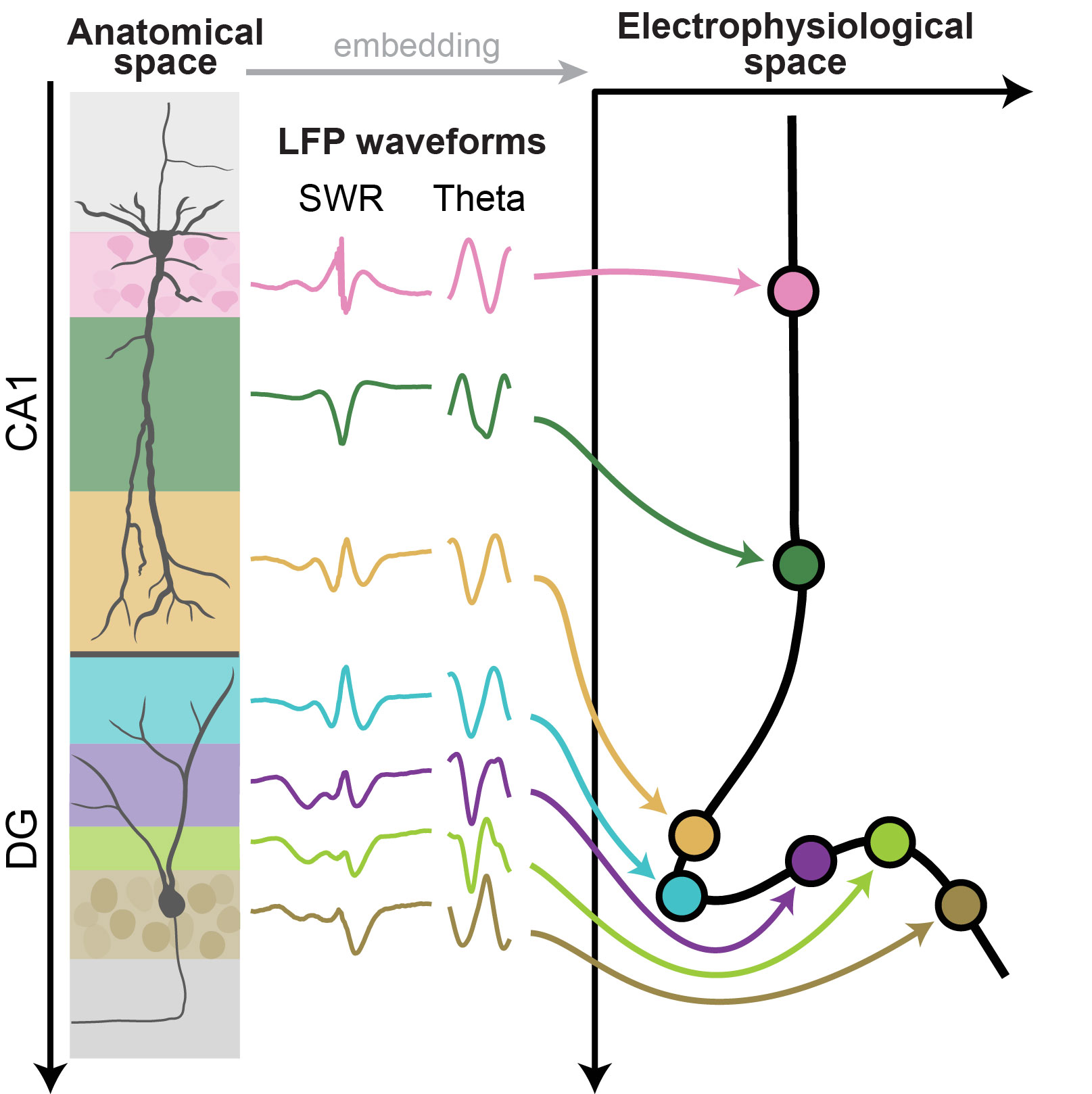Spatio-temporal organization of network activity patterns in the hippocampus.
By processing complex brain signals recorded from mice during behavior, we revealed how neural activity is organized across the layers and pathways of the hippocampus- a region essential for learning and memory. This analysis uncovered distinct patterns of network activity, offering new insight into how information flows and is refined across different stages of this key brain structure.
Understanding how coordinated neural networks support brain functions remains a central goal in neuroscience. The hippocampus, with its layered architecture and structured inputs to diverse cell populations, is a tractable model for dissecting operating microcircuits through the analysis of electrophysiological signatures. We investigated hippocampal network patterns in behaving mice by developing a low-dimensional embedding of local field potentials recorded along the CA1-to-dentate gyrus axis. This embedding revealed layer-specific gamma profiles reflecting spatially organized rhythms and their associated principal cell-interneuron firing motifs. Moreover, firing behaviors along the CA1 radial axis distinguished between deep and superficial principal cells, as well as between interneurons from the pyramidal, radiatum, and lacunosum-moleculare layers. These findings provide a comprehensive map of spatiotemporal activity patterns underlying hippocampal network functions.

2025. Cell Rep, 44(6):115808.
2019. Cell, 176(6):1393-1406.e16.
2023. Adv Neural Inf Process Syst, 36:44341-44355.